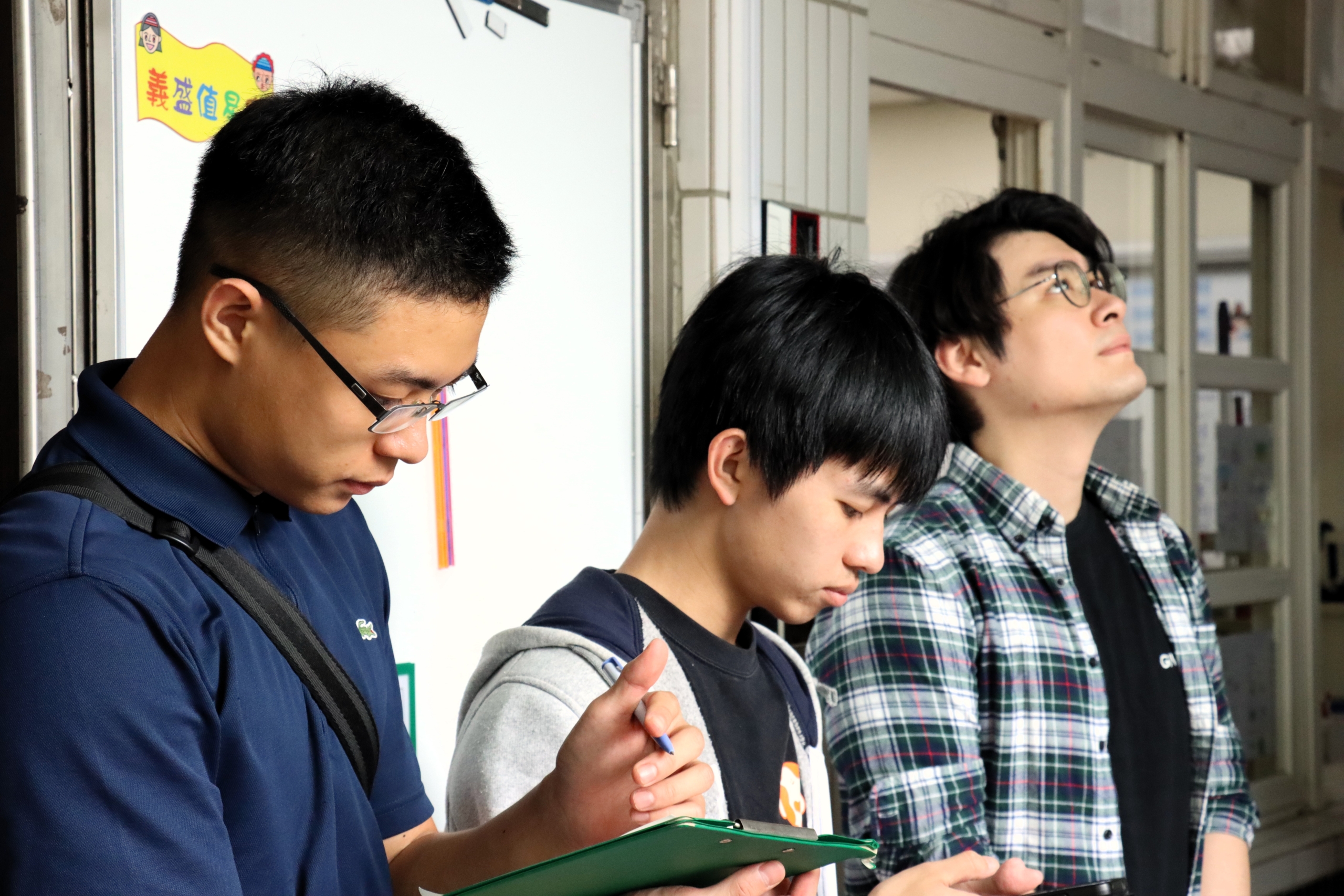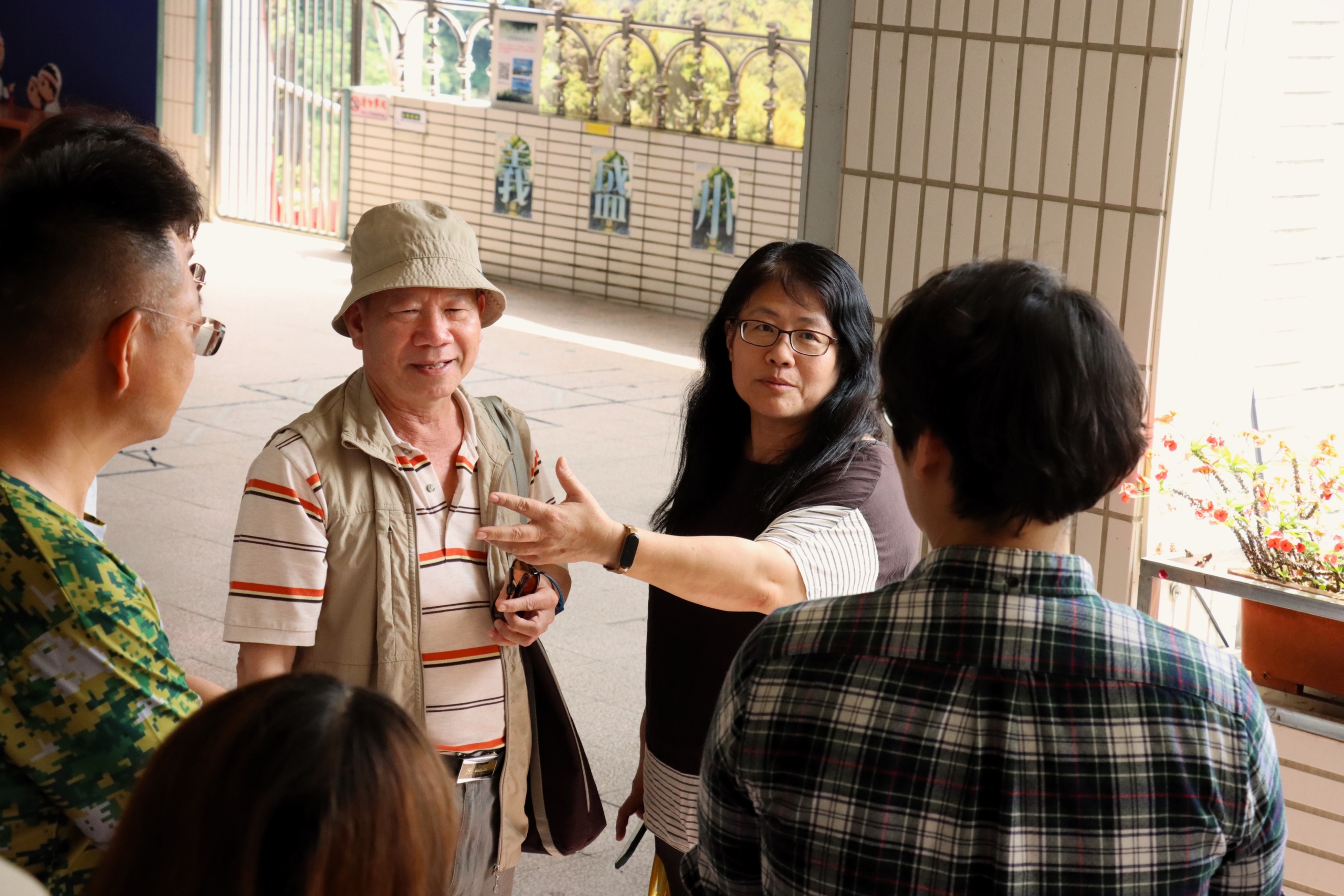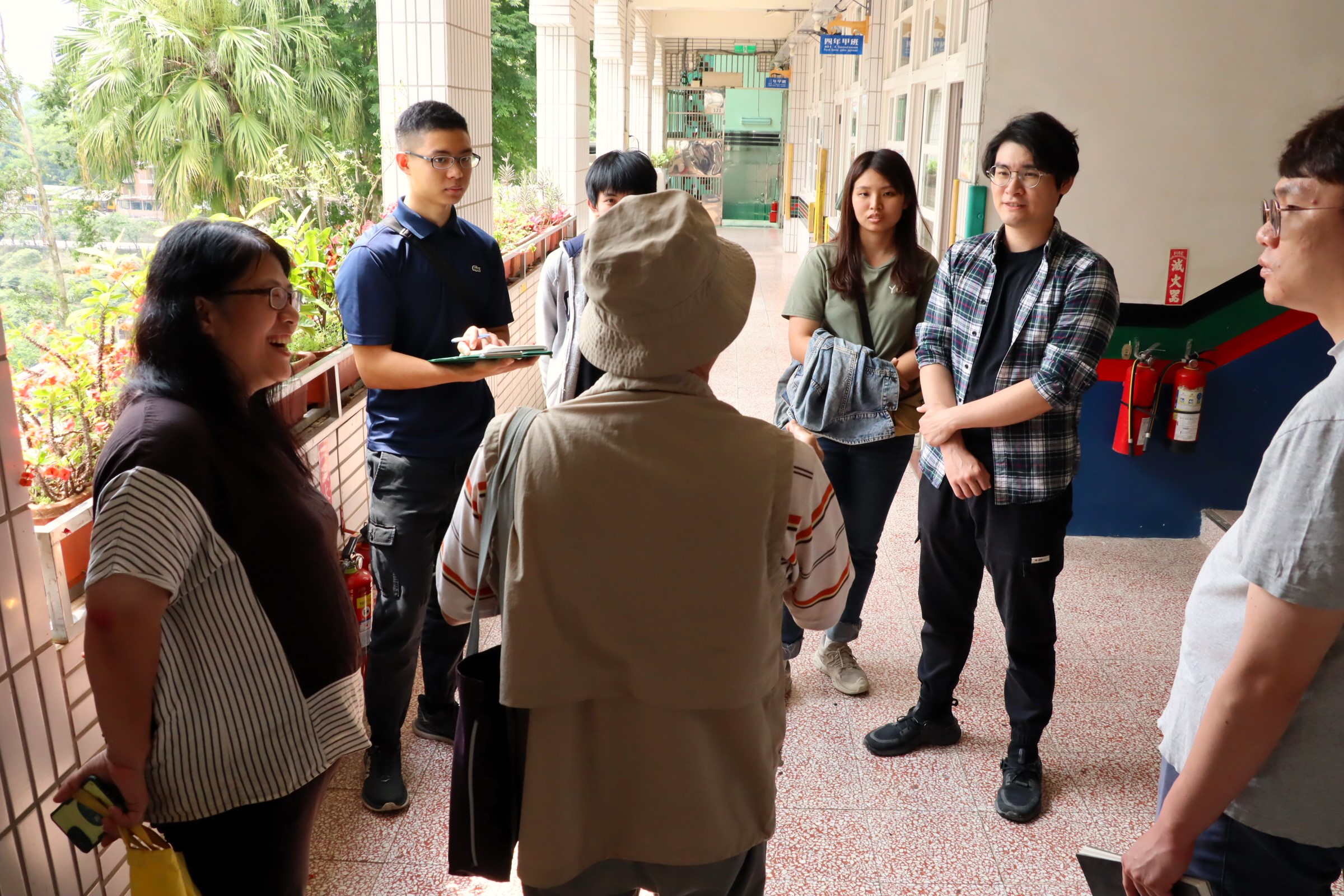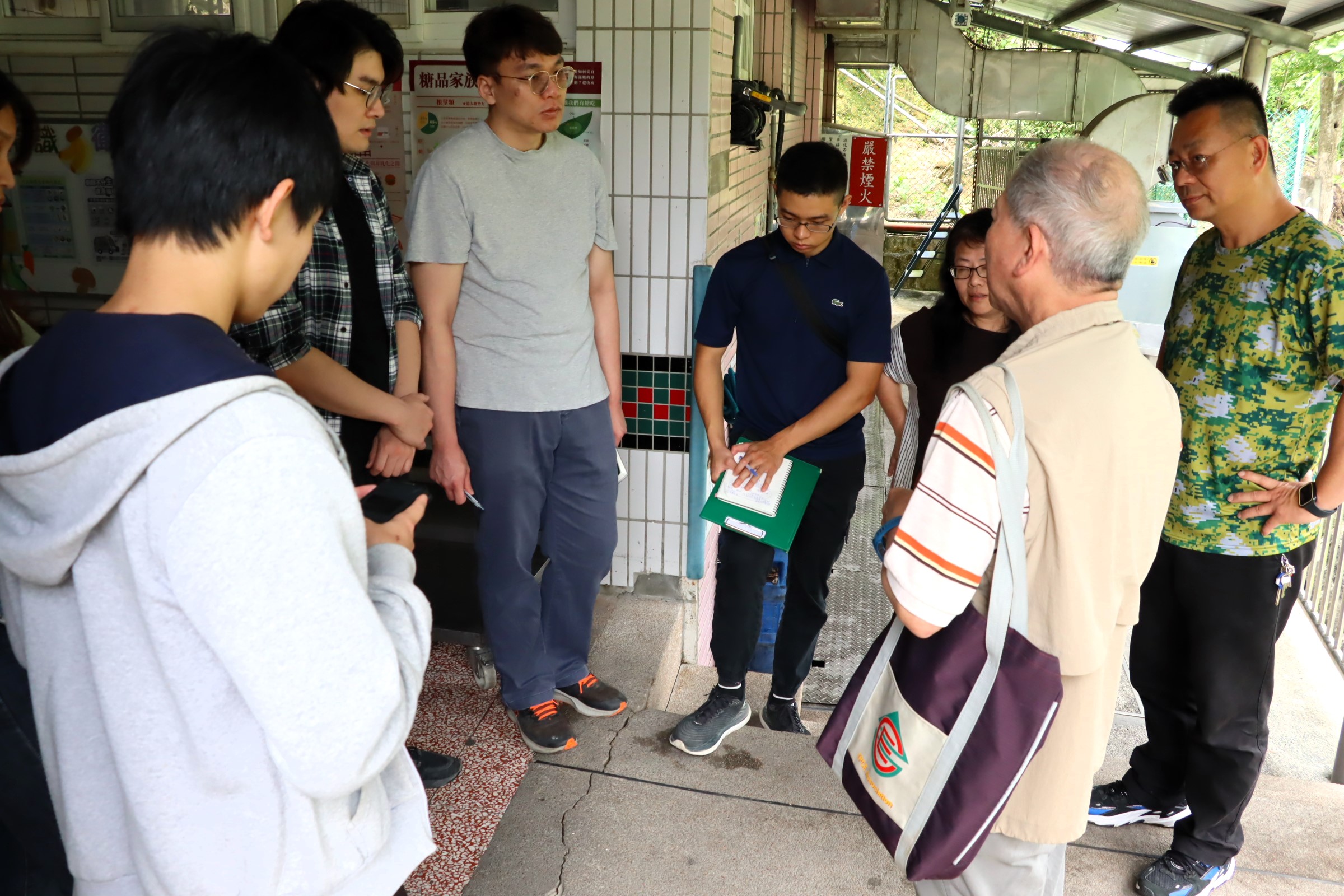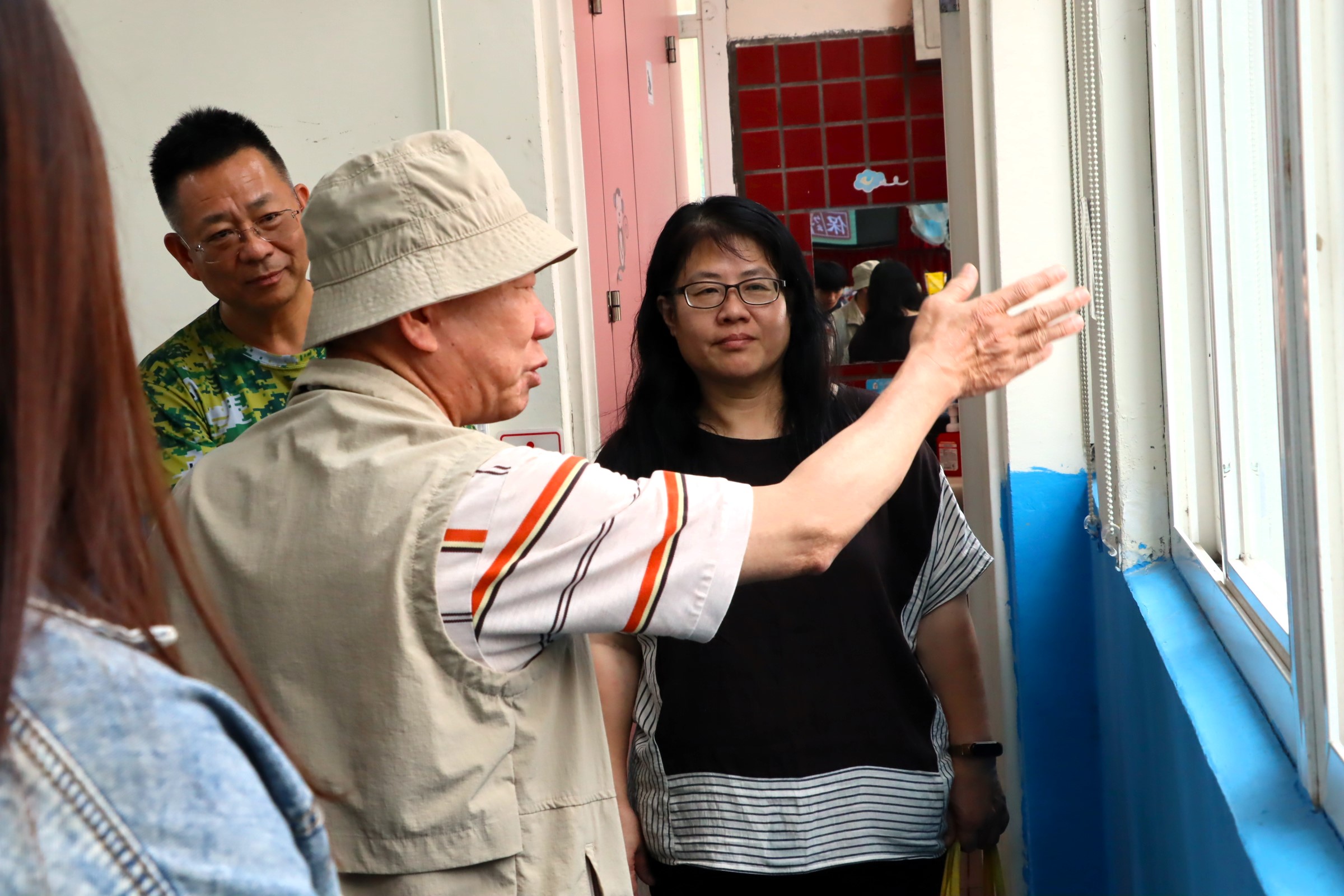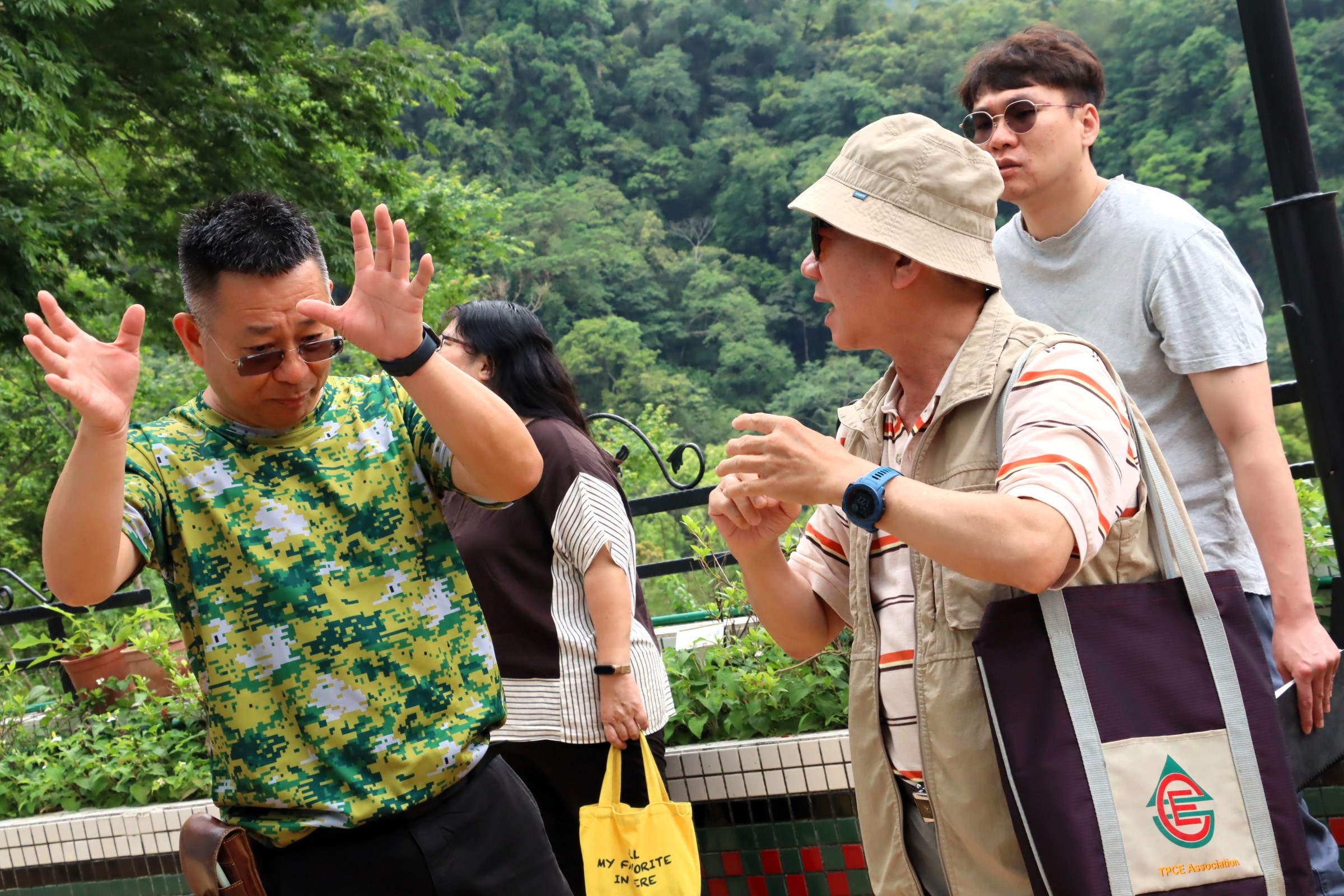At noon, the sky was slightly overcast, and the air felt stuffy, almost suffocating. We wound our way through the slightly curved mountain roads to Yisheng Elementary School, located next to the Xiaowulai Scenic Area. This is a unique elementary school rich in Atayal tribal culture. As the road extended upward, the tall trees intertwined, forming a primitive jungle. The varying shades of green marked the path to Yisheng Elementary School. From the nearby bus stop to the school entrance, we were greeted by the image of an Atayal warrior, and through the beautiful tribal totems, we could feel the distinct Indigenous culture. The triangular relief sculptures beside them left a special impression on me as I stepped onto this land for the first time.
Today, NCU students and teachers, along with structural engineers, came to Yisheng Elementary School to inspect the building’s structure. I took up my camera to document the engineer’s explanations. Starting at the entrance of the auditorium, no wall or ceiling was left unchecked. Naturally, the classrooms and corridors of the entire building were also examined. Before construction, the number of steel bars needed and where to place them must be carefully calculated to achieve the best results. While the engineer meticulously analyzed the structure, the director of Yisheng Elementary School listened more attentively than anyone else. The school seemed like his home; if the sky fell, he would be the first to rush in and hold it up. Meanwhile, I also noticed a student intently taking notes. Their dedication added meaning to our activity and validated the efforts that had gone into this collaboration.
Following the team, we reached the end of the corridor, where it connected to another pathway, forming a T-junction. Standing by the waist-high stainless steel railing, we gazed out at the misty mountains, shrouded in a mysterious veil. Closing my eyes, I could hear the sound of flowing water, unique to the mountains, and the air was fresher without the presence of pollution. It felt like a modern-day “paradise.” Here, one could escape all worries, and a sense of calm would wash over you. I began to fall in love with this place—Fuxing District, a paradise on earth.
After the team had taken in the lush green landscape, we shifted our focus to the cracks on the concrete floor. I had initially thought these were normal signs of aging, but today I learned that most of them were caused by insufficient structural stability. We then moved on to the corridor leading to the upper-grade classrooms. Due to different construction phases, the corridor had two colors—one side was cement gray, the other was painted green. This not only affected the aesthetics but also posed a potential risk due to the seam between the two sections.
Next, we visited the school dormitory, located in a beautiful setting by the mountains and rivers. The director proudly introduced the facilities inside, speaking with the confidence of a warrior hitting his target. We listened intently as he explained the high standard of the dormitory. Although Yisheng Elementary School is located deep in the mountains, and life here may not be as convenient as in urban areas, the dormitory is fully equipped. Opening the windows immediately immerses you in nature—what better place to live than this? After completing a tour of the campus, the inspection was almost done. The engineer complimented the school, noting that there were only a few areas in need of reinforcement. The director smiled with pride and confidence, likely because he truly cared for this place like his own home. It is through this dedication that the students can grow up safely and happily.
Text by Su Zi-Ting
Editor by Li Ruo-Jia
Photos by Su Zi-Ting
Today, we visited Yisheng Elementary School in the mountains, accompanied by NCU students, teachers, and structural engineers. After the April 3rd earthquake, some cracks appeared in the buildings at Yisheng Elementary School. The teachers were concerned about whether these cracks indicated serious structural damage that might expose students to danger. Therefore, the director of general affairs at Yisheng Elementary School led the structural engineers, along with NCU students and teachers, in examining these visible issues one by one.
We began our visit at the highest point of the school, the activity center. The director noted that the walls beneath the water towers on both sides showed no obvious cracks, but cracks were visible on the exterior walls. The engineer explained that the weight of the water towers had helped stabilize the building against the seismic impact, preventing cracks from forming. While cracks had appeared on the walls, they did not pose an immediate threat to the structure. However, the engineer recommended using some filler materials to strengthen the cracks and prevent further issues in the future.
“This earthquake served as a real-life test for our reinforcement work,” said the director of general affairs. Ten years ago, Yisheng Elementary School had undergone a seismic assessment, and they had actively reinforced and improved the buildings based on the engineer’s recommendations. Fortunately, the reinforcements held up well during the recent earthquakes. For example, some columns outside the counseling room were reinforced after the assessment to effectively dissipate seismic energy. During this inspection, the engineer praised the improvements, noting that the building had sustained minimal damage. The engineer also took the opportunity to explain to the NCU students some of the gaps between theoretical and practical aspects of building construction, and how to make corresponding improvements with minimal compromise.
We continued down the school steps to the kindergarten area. Yisheng Elementary School is deeply committed to connecting students with their tribal culture. This effort is evident in small details throughout the school. You can see greetings in the tribal language written in the corridors, hear teachers and children communicating in the tribal language before activities, and notice posters introducing Atayal culture in the hallways. Bit by bit, this culture is infused into the lives of every student with Atayal heritage.
As we walked further down, we reached the student dormitory. The previous assessment had recommended improvements to the windows, and today we saw those changes. Although there were cracks at the top of the walls, the engineer determined that these were cracks in the paint and did not affect the structure itself, bringing relief to the director. After touring the campus, we confirmed that most of the buildings remained sturdy after the earthquake, with no safety concerns. This marked the completion of our task for the day. The visit was special, not only because I gained some architectural knowledge but also because I learned more about the overall structure of Yisheng Elementary School. I look forward to another opportunity to explore the history and culture of the school’s buildings with the director.
Text by Cai Nian-Zhen
Editor by Li Ruo-Jia
Photos by Cai Nian-Zhen

